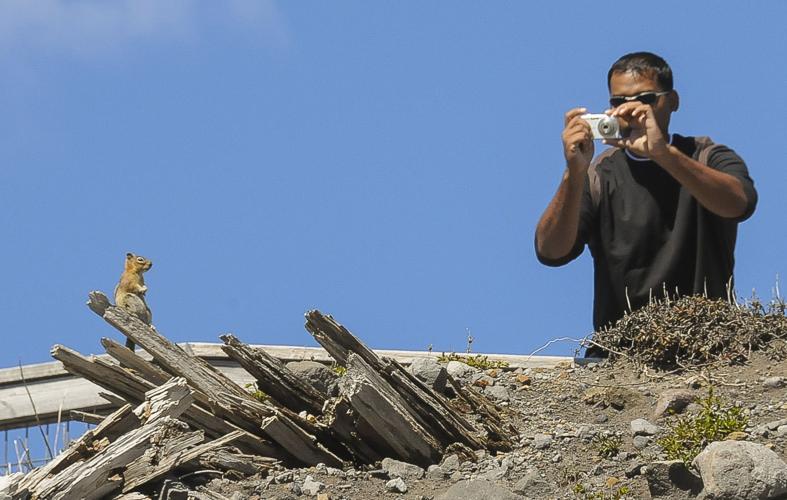No, this isn’t an article for the “Op-Ed” page of a newspaper. This is about photography! In this case, I’m referring to how you pick a subject to photograph. This is something I’ve touched on in past columns, but I think it deserves a bit more discussion.
We tend to take most of our photos at eye-level – about five to six feet above the ground. This is natural, because it is typically how we see the world and there is a natural tendency to take photos that are representative of what we see.
But we miss a lot of great photo opportunities by only looking for potential subjects that are more or less straight in front of us. There are a lot of great photo opportunities, if you take the time to look at the world from different viewpoints - up, down, from above and below, inside-out and outside-in. And don’t forget to look “close-up.” As I discussed in a previous column on close-up photography, your SmartPhone has great close-up capabilities!
For photographers who consistently produce outstanding photographs, looking at potential photo subjects from different viewpoints is a way of life. For folks who are just getting serious about photography, it may take some self-training to really look at the world from different angles. It is worth the effort.
From a personal standpoint, I find that taking the time to look at our world from different viewpoints forces me to slow down and really look at something – sort of akin to “Stop and smell the roses.” For me, I find this to be very stress relieving!
But I digress! “What should I photograph?”
Looking up. There are times when photo opportunities just seem to fall from the sky! This ground squirrel had posing and panhandling down to a fine art! Taken at Mt. Saint Helens forward observation point. Even though it appears that the camera was at ground level, I was actually some distance away on a lower trail. From the archives. Nikon D300 camera w/18-200 zoom lens at 200 mm.
Anything you find interesting, intriguing and aesthetically pleasing – perhaps something that a casual passer-by might never see. There may be something about the light, lines or colors that you find pleasing.
For a starting point, take a walk. Look up occasionally. Do you see any interesting patterns or colors in the clouds, tree leaves or branches? Looking down what do you see in rock or stone patterns, flowers or unusual cacti? If you can (and at our ages, this is often difficult) get your camera lens down to the same “eye level” as your subject – be it a pet, a plant, or a grandchild. Having a camera with a tiltable viewing screen can be a big help with photos such as these.
You’ve heard this here before, but it bears repeating: take lots of photos! Then, with some quiet time and perhaps a glass of wine, view your photos and pick the ones you like best. It usually helps to transfer your images to a computer so you can view them on a larger screen. Looking at photos you don’t like and understanding why is as important as picking out that very best photo.
Now, grab your camera or SmartPhone and take some photos. Look at - and photograph - your world from a different viewpoint!
Space constraints make it difficult to include detailed information in these articles. If you want more info on any of the topics covered in this column, have general questions or comments, or an idea for a future column, please send me an email at PhotographyForEveryone@hagedon.net. And remember to visit the “Saddlebag Notes” photography web pages on their website. (www.saddlebagnotes.com/photography).
Jim has a Fine Arts degree with a major in Photography and over 50 years experience in a wide range of photographic disciplines.






